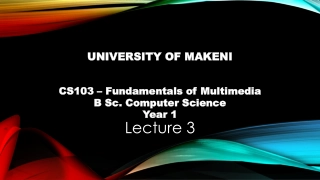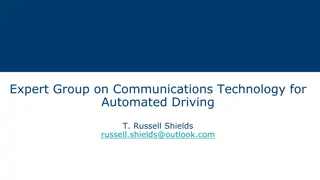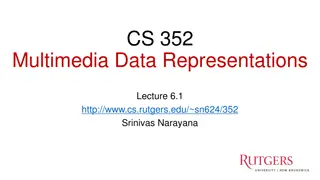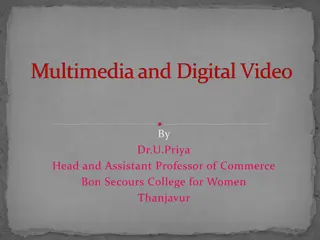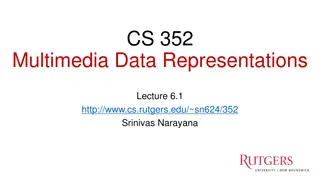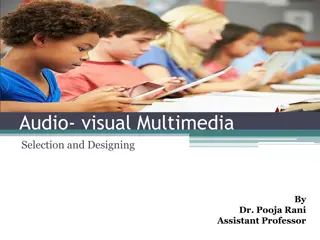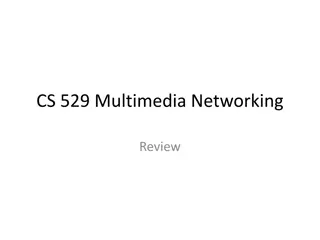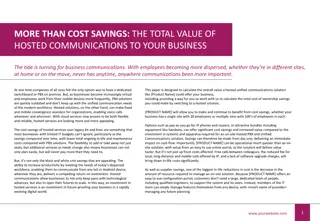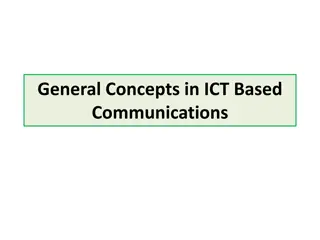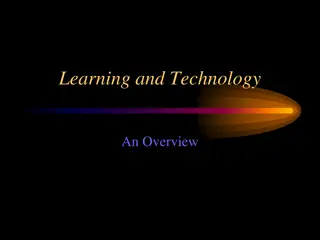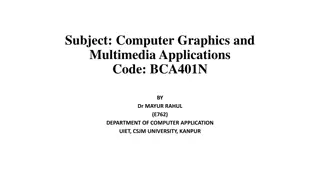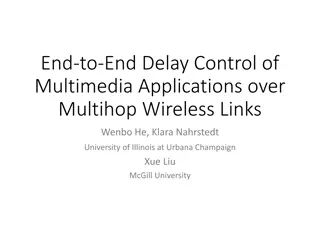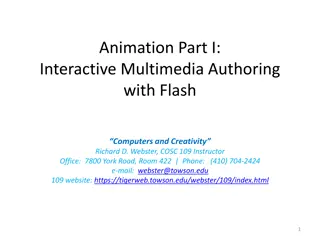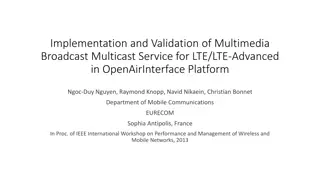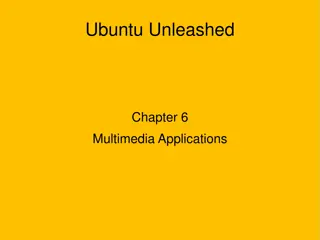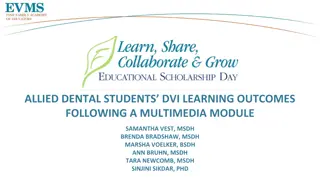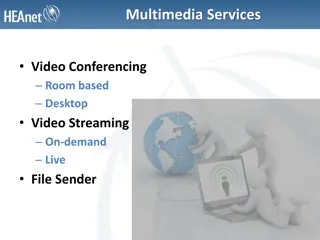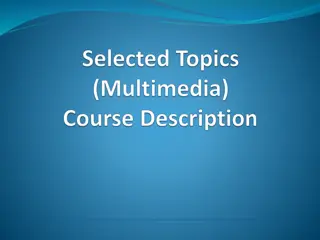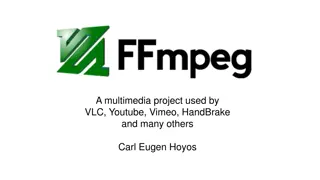Understanding Multimedia Network Communications and Applications
Multimedia network communications involve high data rates, real-time interaction, and varied quality of service parameters like data rate, latency, packet loss, jitter, and synchronization. Different multimedia service classes cater to specific requirements such as real-time, priority data, silver, and best effort services.
Download Presentation

Please find below an Image/Link to download the presentation.
The content on the website is provided AS IS for your information and personal use only. It may not be sold, licensed, or shared on other websites without obtaining consent from the author. Download presentation by click this link. If you encounter any issues during the download, it is possible that the publisher has removed the file from their server.
E N D
Presentation Transcript
UNIT V Multimedia Network Communications and Applications 1
Multimedia Network Communications and Applications Characteristics of MultimediaData Multimedia network communication is same as computer network communication because both are deal with data communication. Multimedia data has the following characteristics: Voluminous they demand very high data rates, possibly dozens or hundreds ofMbps. Real-time and interactive they demand low delay and synchronization between audio and video for lip sync . In addition, applications such as video conferencing and interactive multimedia also require two-way traffic. Sometimes bursty data rates fluctuate drastically, e.g., no traffic most of the time but burst to high volume in video-on- demand. 2
Multimedia Network Communications and Applications QualityofMultimediaDataTransmission: Quality ofService (QoS) Quality of Service (QoS) depends on many parameters: Data rate: a measure of transmission speed, often kilobits per second (kbps) or megabit per second(Mbps). Latency (maximum frame/packet delay): maximum time needed from transmission to reception, often measured in milliseconds (msec). EX. In voice communication, when the round-trip delay exceeds 50 msec, echo becomes a noticeable problem; when one-way delay is longer than 250 msec, talker overlap will occur since each caller will talk without knowing the other is also talking. Packet loss or error: a measure (in percentage) of error rate of the packetized data transmission. Packets get lost or garbled or delivered late over the internet. When it approaches 10%, it becomes intolerable. Sometimes simple-error-recovery method used for real- time multimedia to replay the last packet. 3
Multimedia Network Communications and Applications QualityofMultimediaDataTransmission: Quality ofService (QoS) Jitter (or delay jitter): a measure of smoothness of the audio/video playback, related to the variance of frame/packet delays. A large buffer (jitter buffer) can be hold enough frames to allow the frame with longest delay to arrive, to reduce playback jitter. This increases the latency and may not be desirable in real-time and interactive applications. Sync skew: a measure of multimedia data synchronization, often measured in milliseconds (msec). For a good lip synchronization, the limit of sync skew is +/- 80 msec between audio and video. For video with speaker and voice the limit of sync skew is +/- 120 msec if video precedes voice and 20 msec if voice precedes video. 4
Multimedia Network Communications and Applications QualityofMultimediaDataTransmission: Multimedia ServiceClasses Based on previous measures, multimedia services classified as following: Real-Time (also Conversational): two-way traffic, low latency and jitter, possibly with prioritized delivery, e.g., voice telephony and video telephony. Priority Data: two-waytraffic, low loss and low latency, with prioritized delivery, e.g., E-commerce applications. Silver: moderate latency and jitter, strict ordering and sync. One- way traffic, e.g., streaming video, or two-way traffic (also Interactive), e.g., web surfing, Internet games. Best Effort (also Background): no real-time requirement, e.g., downloading or transferring large files (movies). Bronze: no guarantees for transmission. 5
Multimedia Network Communications and Applications Table 16.1: Requirement on Network Bandwidth / Bit-rate 6
Multimedia Network Communications and Applications Table 16.2: Tolerance of Latency and Jitter in Digital Audio and Video 7
Multimedia Network Communications and Applications QualityofMultimediaDataTransmission: PerceivedQoS Although QoS is commonly measured by the above technical parameters, QoS itself is a collective effect of service performances that determine the degree of satisfaction of the user of that service . In other words, it has everything to do with how the user perceives it. For example, in real-time multimedia: Regularity is more important than latency (i.e., jitter and quality fluctuation are more annoying than slightly longer waiting). Temporal correctness is more important than the sound and picture quality (i.e., ordering and synchronization of audio and video are of primary importance). Humans tend to focus on one subject at a time. User focus is usually at the center of the screen, and it takes time to refocus especially after a scene change. 8
Multimedia Network Communications and Applications PrioritizedDelivery Used to alleviate the perceived deterioration (high packet loss or error rate) in network congestion. Prioritization for types of media: Transmission algorithms can provide prioritized delivery to different media. Prioritization for uncompressed audio: PCM audio bitstreams can be broken into groups of every nth sample. Prioritization for JPEG image: The different scans in Progressive JPEG and different resolutions of the image in Hierarchical JPEG can be given different priorities. Prioritization for compressed video: Set priorities to minimize playback delay and jitter by giving highest priority to I-frames for their reception, and lowest priorityto B-frames. 9
Multimedia Network Communications and Applications Multimedia overIP A broadcast message is sent to all nodes in the domain, a unicast message is sent to only one node, and a multicast message is sent to a set of specified nodes. IP-Multicast: Anonymous membership: the source host multicasts to one of the IP- multicast addresses doesn t know who will receive. Potential problem: too many packets will be traveling and alive in the network use time-to-live (TTL) in each IP packet. Vital for applications such as mailing lists, group file transfer, audio/video conferencing. 10
Multimedia Network Communications and Applications Multimedia over IP(cont.) RTP (Real-time Transport Protocol) Designed for the transport of real-time data such as audio and video streams: Primarily intended for multicast. Used in nv (network video) for MBone, Netscape LiveMedia, Microsoft Netmeeting, and Intel Videophone. Usually runs on top of UDP which provides efficient (but less reliable) connectionless datagram service: RTP must create its own timestamping and sequencing mechanisms to ensure the ordering. 11
Multimedia Network Communications and Applications Multimedia over IP(cont.) RTCP (Real Time Control Protocol) A companion protocol ofRTP: Monitors QoS in providing feedback to the server (sender) and conveys information about the participants of a multi-party conference. Provides the necessary information for audio and video synchronization. RTP and RTCP packets are sent to the same IP address (multicast or unicast) but on different ports. 12
Multimedia Network Communications and Applications Multimedia over IP(cont.) RSVP (Resource ReSerVation Protocol) Developed to guarantee desirable QoS, mostly for multicast although also applicable to unicast. A general communication model supported by RSVP consists of m senders and n receivers, possibly in various multicast groups (e.g. Fig. 16.1). The most important messages of RSVP: A Path message is initiated by the sender, and contains information about the sender and the path (e.g., the previous RSVP hop). A Resv message is sent by a receiver that wishes to make a reservation. 13
Multimedia Network Communications and Applications Multimedia over IP (cont.) Main Challenges: There can be a large number of senders and receivers competing for the limited network bandwidth. The receivers can be heterogeneous in demanding different contents with different QoS. They can be dynamic by joining or quitting multicast groups at any time. 14
Multimedia Network Communications and Applications Fig. 16.1: A scenario of network resource reservation with RSVP. 15
Multimedia Network Communications and Applications About the Example in Fig.16.1 Fig. 16.4 depicts a simple network with 2 senders (S1, S2), three receivers (R1, R2, and R3) and 4 routers (A, B, C, D): In (a), Path messages are sent by both S1 and S2 along their paths to R1, R2, and R3. In (b) and (c), R1 and R2 send out Resv messages to S1 and S2 respectively to make reservations for S1 and S2 resources. Note that from C to A, two separate channels must be reserved since R1 and R2 requested different data streams. In (d), R2 and R3 send out their Resv messages to S1 to make additional requests. R3 s request was merged with R1 s previous request at A and R2 s was merged with R1 s at C. 16
Multimedia Network Communications and Applications Multimedia over IP(cont.) RTSP (Real Time Streaming Protocol): Streaming Audio and Video: Audio and video data that are transmitted from a stored media server to the client in a data stream that is almost instantly decoded. RTSP Protocol: for communication between a client and a stored media server (Fig. 16.2). Requesting presentation description: the client issues a DESCRIBE request to the Stored Media Server to obtain the presentation description media types, frame rate, resolution, codec, etc. Session setup: the client issues a SETUP to inform the server of the destination IP address, port number,protocols,TTL (for multicast). Requesting and receiving media: after receiving a PLAY, the server started to transmitstreaming audio/video data using RTP. Session closure: TEARDOWN closes the session. 17
Multimedia Network Communications and Applications Fig. 16.2: A possible scenario of RTSP operations. 18
Multimedia Network Communications and Applications Multimedia over IP(cont.) Internet Telephony : Main advantages of Internet telephony over POTS (Plain Old Telephone Service): Uses packet-switching network usage is much more efficient (voice communication is bursty and VBR encoded). With the technologies of multicast or multipoint communication, multi-party calls are not much more difficult than two-party calls. With advanced multimedia data compression techniques, various degrees of QoS can be supported and dynamically adjusted accordingto the network traffic. Good graphics user interfaces can be developed to show available features and services, monitor call status and progress, etc. 19
Multimedia Network Communications and Applications Transport ofMPEG-4 Delivery Multimedia Integration Framework (DMIF) in MPEG-4: An interface between multimedia applications and their transport. It supports: Remote interactive network access (IP, ATM, PSTN, ISDN, mobile). Broadcast media (cable or satellite). Local media on disks. A single application can run on different transport layers as long as the right DMIF is instantiated. Fig. 16.3 shows the integration of delivery through three types of communication mediums. MPEG-4 over IP: MPEG-4 sessions can be carried over IP-based protocols such as RTP, RTSP, and HTTP. 20
Multimedia Network Communications and Applications Fig.16.3: DMIF the multimedia content delivery integration framework. 21
Multimedia Network Communications and Applications Media-on-Demand(MOD) Interactive TV (ITV) and Set-top Box (STB): ITV supports activities such as: TV (basic, subscription,pay-per-view). Video-on-demand(VOD). Information services (news, weather, magazines, sports events, etc.). Interactive entertainment (Internet games, etc.). E-commerce (on-line shopping, stocktrading). Access to digital libraries and educational materials. The fundamental difference between ITV and conventional TV is that ITV invites user interactions; hence need tow way traffic (downstream and upstream) Also, ITV is rich in information and multimedia content. 22


